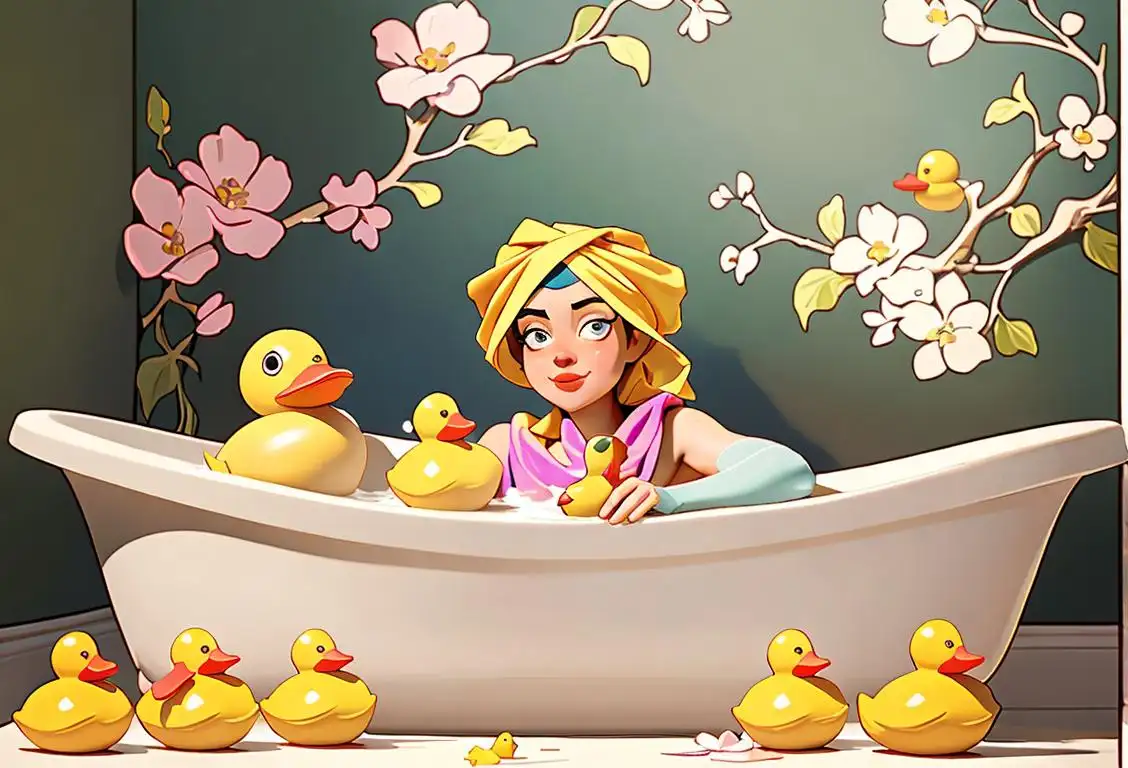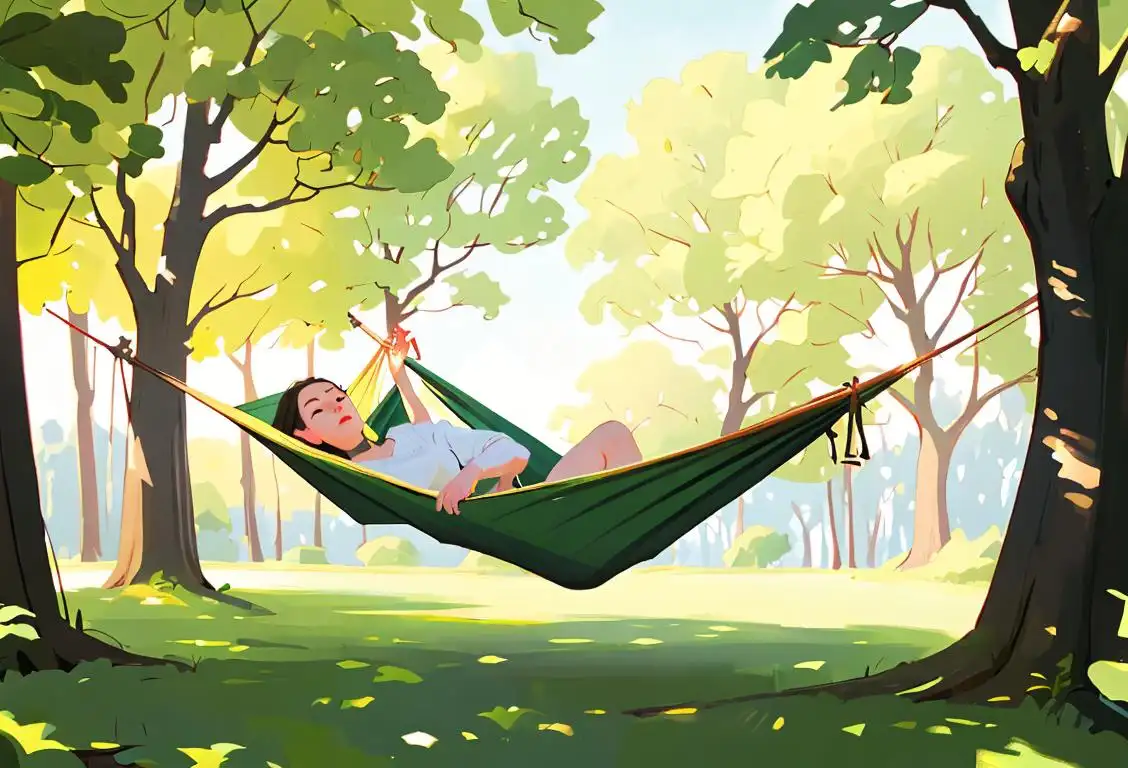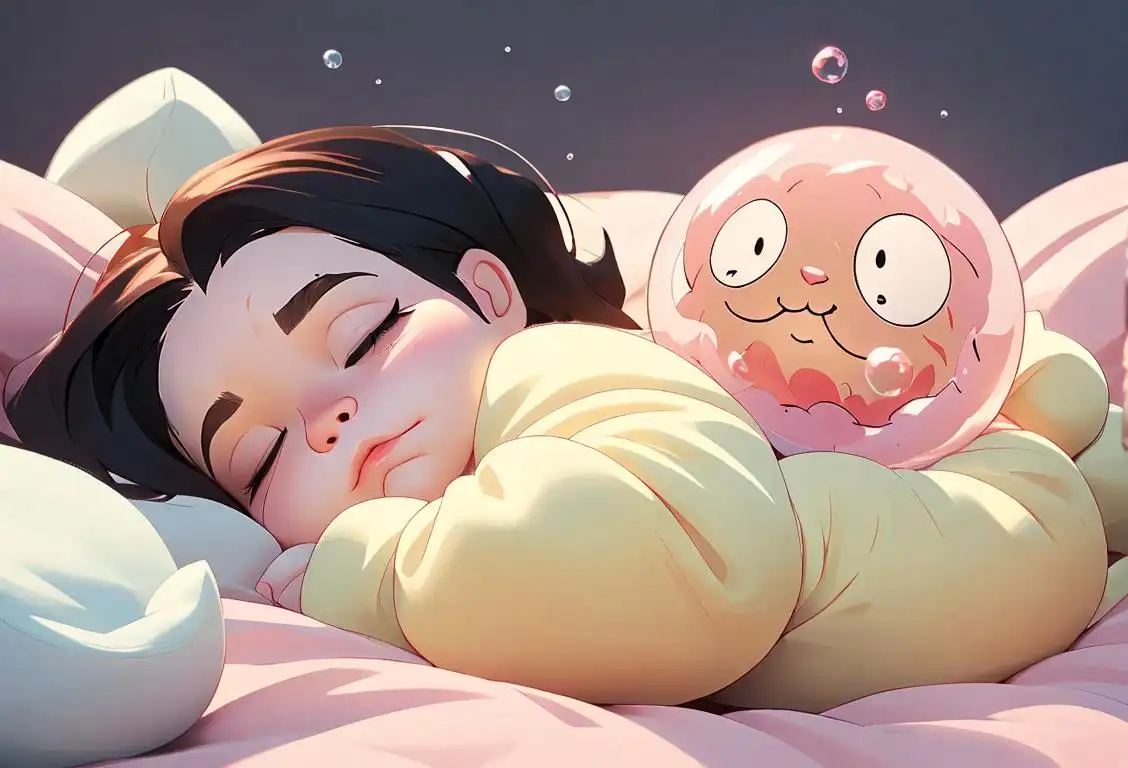National Pampering Day

Get ready to indulge in some serious self-care because it's National Pampering Day! This is the day when you can treat yourself like royalty and indulge in all your pampering fantasies. From spa treatments to massages, from bubble baths to face masks, this day is all about giving yourself some well-deserved TLC. So sit back, relax, and let the pampering begin!
When is Pampering Day?
It's national pampering day on the 17th October.
The Internet History of National Pampering Day
Since the dawn of time, humans have sought ways to relax and rejuvenate. And while pampering oneself is nothing new, the concept of having a designated day for it is a relatively recent phenomenon.
The origins of National Pampering Day can be traced back to the advent of the internet. It all started when a group of friends decided that the world needed a day dedicated to self-care and relaxation. They wanted to create a special day where people could pamper themselves without feeling guilty or selfish.
So, on October 17, 2017, these friends launched the first-ever National Pampering Day. They took to social media and spread the word like wildfire. Soon, people from all over the world were celebrating this new holiday, sharing their pampering rituals, and inspiring others to take a break from their busy lives and indulge in some self-love.
As the years went by, National Pampering Day gained more and more recognition. It became a trending topic on social media, with people sharing pictures of their luxurious spa days, cozy nights in, and DIY beauty treatments. Celebrities and influencers jumped on the bandwagon, using their platforms to promote self-care and pampering.
Today, National Pampering Day is celebrated in a variety of ways. Some people book a day at the spa, treating themselves to massages, facials, and manicures. Others prefer a cozy night in, complete with a bubble bath, scented candles, and a good book. And then there are those who go all out, organizing pampering parties with their loved ones, complete with DIY face masks, foot massages, and delicious treats.
Did You Know?
Did you know that pampering oneself is not just a luxury, but a necessity? Taking time to relax and rejuvenate can have numerous benefits for your physical and mental well-being. So don't feel guilty about indulging in some pampering on National Pampering Day - it's good for you!
History behind the term 'Pampering'
1590
Origins of the term 'pampering'
The term 'pampering' originated from the Middle English word 'pamperen' which means 'to cram with food.' It comes from the Old French word 'pamper' which means 'to indulge or coddle.' In the 16th century, the term was used to describe overfeeding livestock or fattening them up for market.
16th century
The origins of pampering
The term 'pampering' finds its roots in the 16th century. Derived from the Middle English word 'pamperen,' meaning to indulge or gratify, it originally referred to the act of indulging or delighting oneself or others in a luxurious and extravagant manner.
1762
The origin of 'pampering'
The term 'pampering' finds its roots in the English language in 1762. It derives from the word 'pamper,' which means to indulge or treat with excessive care and attention. Originally, 'pamper' was used to describe the act of feeding and nourishing a child or animal.
19th century
Pampering in literature and spas
During the 19th century, the concept of pampering gained popularity in literature and spa culture. Writers and poets began using the term to describe the act of taking special care or lavishing attention on someone. Furthermore, luxurious spas emerged, offering treatments and services focused on relaxation and indulgence.
1653
Expanding to a human context
By the mid-17th century, the term 'pampering' started being used in a human context. It referred to indulgent or excessive treatment, especially related to personal care. People began using the term to describe the act of spoiling oneself or someone else with luxurious and comforting activities to promote relaxation and well-being.
1828
Pampering takes a broader meaning
In 1828, the meaning of 'pamper' expanded to encompass the idea of providing comfort and luxury beyond the realm of nourishment. It began to be associated with indulging oneself or someone else in extravagant treatments and pleasures. This shift in meaning reflected a growing emphasis on self-care and personal well-being.
1891
Spa culture elevates pampering
The late 19th century witnessed the rise of spa culture, which significantly influenced the concept of pampering. In 1891, the first modern spa, the Saratoga Springs Spa, opened in the United States. This establishment focused on providing various luxurious treatments, such as massages, hydrotherapy, and facials. The popularity of spas added a new dimension to the idea of pampering, associating it with relaxation, rejuvenation, and the pursuit of beauty.
20th century
Rise of beauty and wellness industries
In the 20th century, the beauty and wellness industries flourished, bringing the concept of pampering to a wider audience. Pampering became associated with self-care and a way to rejuvenate the body and mind. Beauty salons, spas, and skincare products offered services and treatments aimed at pampering individuals, promoting a sense of well-being and relaxation.
1840
Rise of spa culture
In the 19th century, spa culture gained popularity, and pampering took on a new meaning. People began associating pampering with visits to wellness retreats, where they could experience various relaxation and rejuvenation treatments such as massages, facials, and mineral baths. Pampering became synonymous with self-care and taking time for oneself.
1950
Redefining pampering
In the mid-20th century, the concept of pampering expanded beyond spa treatments. It started encompassing a broader range of activities focused on indulgence and self-gratification. Pampering now included treating oneself to nice meals, buying luxury items, going on vacations, and engaging in any activity that brought pleasure and enjoyment.
1950s
The marketing of 'pampering'
During the post-World War II era, a shift in consumer culture occurred, leading to the widespread marketing of beauty and self-care products. Advertisements began to promote the idea of pampering as necessary for personal well-being and self-esteem. This marketing strategy played a crucial role in cementing pampering as a cultural concept, emphasizing the importance of taking time for oneself and indulging in pleasurable experiences.
21st century
Pampering in modern culture
In the current era, pampering has become deeply ingrained in modern culture. The term is frequently used to refer to acts of self-care, such as indulging in a luxurious bath, treating oneself to a spa day, or enjoying a massage. Pampering is seen as an important aspect of maintaining mental and physical health, providing a much-needed respite from the hectic pace of daily life.
1980s
Pampering as a lifestyle trend
The 1980s witnessed the height of the wellness movement, and pampering became an integral part of the emerging self-care and holistic health trends. The concept was no longer limited to occasional indulgence; it became a lifestyle choice. This era saw the rise of spas, wellness retreats, and an expanded range of pampering experiences, including yoga, meditation, aromatherapy, and alternative therapies.
1990
The rise of pampering products
With the growth of the beauty and wellness industry in the late 20th century, pampering products became widely available. The market flourished with skincare and beauty products designed to make people feel pampered in their own homes. These products included luxurious creams, masks, and spa-like treatments that could be enjoyed without leaving the comfort of one's own bathroom.
Present day
Pampering as a lifestyle
Today, pampering has become a lifestyle choice, with individuals recognizing the importance of self-care and indulging in activities that promote relaxation and well-being. It is seen as a way to de-stress, recharge, and prioritize one's mental and physical health. Whether it's a spa day, a bubble bath, or a cozy night in, pampering has become an integral part of many people's lives.
Present day
Pampering in the digital age
In the present day, pampering has evolved to include a wide range of activities and experiences designed to promote relaxation, self-care, and overall well-being. The digital age has further expanded the concept, with online marketplaces offering curated pampering products and services delivered right to people's homes. The term 'pampering' has become synonymous with self-indulgence, luxury, and the pursuit of personal happiness in an increasingly fast-paced world.
Did you know?
Did you know that pampering oneself is not just a luxury, but a necessity? Taking time to relax and rejuvenate can have numerous benefits for your physical and mental well-being. So don't feel guilty about indulging in some pampering on National Pampering Day - it's good for you!Tagged
fun loved ones relaxationFirst identified
15th October 2016Most mentioned on
17th October 2017Total mentions
164Other days
Ewa Beach Day
Pampering Day
Bathtub Party Day
Fl Day
Lie Around At Home In Your Pajama Pants Day
Slowdown Day
Drop Everything And Read Day
Eat Outside Day
Healing Day
Nap Nap Day






